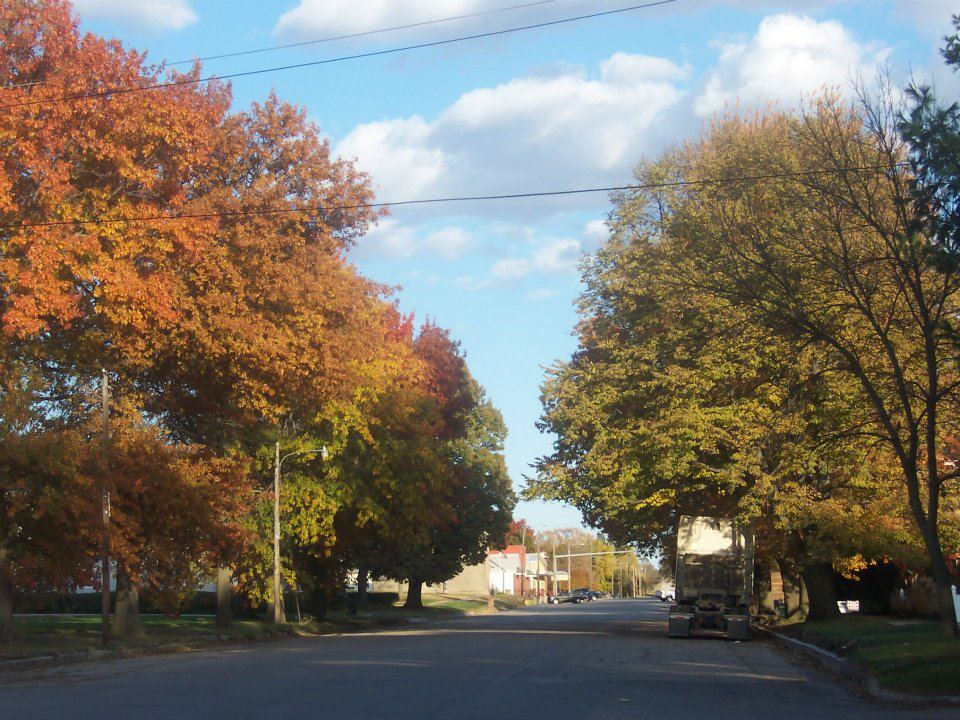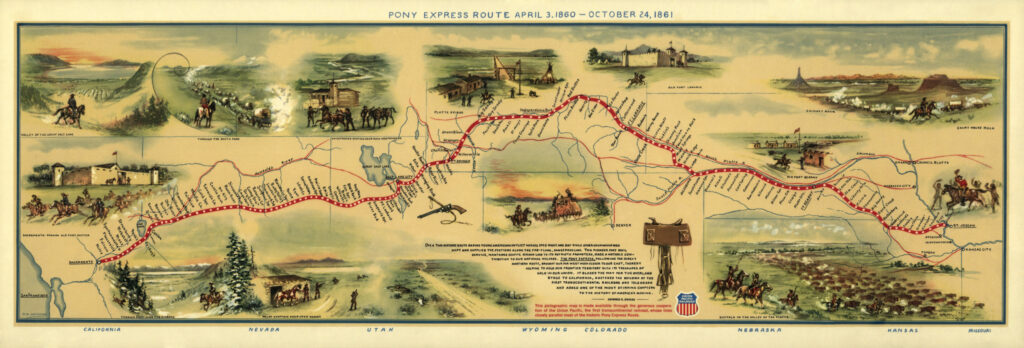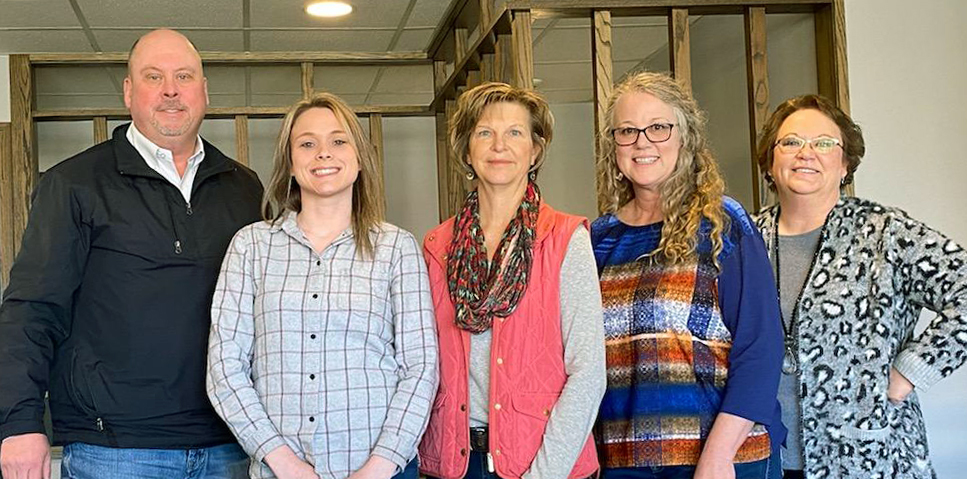Love My Community: Beaver Crossing
When early pioneers crossed the central Great Plains in the late summer heat, the view from their wagons was flatlands––great swaths of dry prairie grass, bland colors and monotonous landscapes. For days on end, it rarely changed. Imagine, then, how their eyes drank in the many shades of green as they came upon the rich, fertile oasis of what is now the town of Beaver Crossing.
As they stopped to soak in cool shade under tall trees, they knew they’d found it: the good life they had longed for.

Large shade trees, like those early settlers enjoyed while passing through, are a hallmark of the Beaver Crossing landscape.
Thousands of acres surrounded them, blessed with flowing artesian springs from a vast underground source. Settlers looking for agricultural land reaped success. Over time, business would boom as well, thanks to the springs.
But, by the 1920s, it became clear that the water was far from bottomless, leading to the end of the boom and great struggles for the town and its people. Other troubles followed, but the town would survive, a testament to the strong spirit of the original settlers and the people who call it home today.
The Quintessential Small Town
The Beaver Crossing of today, just 30 miles east of Lincoln, retains its early character. Walking along the streets, you notice everyday life, from people shopping at the hardware store to ladies getting pampered at the local salon.
Neighbors chat with each other from yard to yard, their beautiful Victorian homes in the background. Add in local baseball and other sports venues, a picturesque park and campgrounds, churches, a post office and a volunteer fire department, and you may wonder if you’ve landed in a Norman Rockwell painting.
This is the kind of place that’s perfect to raise a family and love your neighbors––exactly what people here have been doing for many generations. But how did Beaver Crossing go from an emerald oasis of life on the frontier path to where it is today? Ah, that is the interesting part of the tale.
A Pioneering Past

The Beaver Crossing area became a common stop for drivers on the Pony Express and pioneers traveling along the Oregon, California and Overland Trails.
Like most rural towns in the U.S., it’s taken more than shared apple pies and neighborly good deeds to keep this community alive and strong. The town has been preserved by a spirit of determination that has runs through generations in Beaver Crossing, starting before the town was even a town. The place and its people played quite a part in the epic tale of America’s expansion west.
In the early days, it was a place where travelers could visit Beaver Creek, a point where the Oregon, California and Overland Trails crossed through. From weary pioneer families to riders on the Pony Express, those who passed this way between 1862 and 1871 likely stopped in the settlement by the creek. There, they serviced their animals, repaired wagons, stocked up on supplies and could even drop a letter at the post office. to folks back home. If the trip wasn’t going well, they could find solace in the local saloon.
Rumor had it that the new railroad would reach the area quickly, so a town plat was drawn up in 1875. Though the trains didn’t arrive for another 13 years, the area continued to grow. The flowing artesian wells that sprung up all over town meant both farming and business flourished. Two canneries, a bustling flour mill and small businesses ensured locals and those passing through had their needs met.
The Boom Times
By the time the railroad finally arrived in 1888, there were more than 200 people in this thriving little frontier town. By 1910, Beaver Crossing’s population hit 1,000, the highest number to this day. The town built a grand lake for recreation and a large amphitheater soon followed. Annual summer picnics became a tradition. By 1925, busy summer weekends saw as many as 3,000 visitors from all over Seward County.
The 1930s, however, marked a massive change. Overuse of the land and the droughts of the Dust Bowl era dried up the artesian springs, which affected both farms and industry. The canneries were shuttered after produce gardens dried up, and the population declined as farm families, without water to irrigate in the midst of a massive drought, had to find other ways to survive. And yet, the spirit of determination, passed down from the original settlers of Beaver Crossing, kept the town alive.
Today: A Friendly Way of Life
You can’t help but notice the strong sense of pride throughout Beaver Crossing today. Driving by the large beaver mascot in a family’s front yard, strolling along the main street, reading the town marquee for a few moments and reading the messages of happy birthdays and other celebrations, you feel it. If you happen to pass one of the local men volunteering their time to mow the cemetery or ballfields, the smell of that freshly cut grass will remind you what community really means.
People here truly care about each other. Whether it’s a young family or an older couple, home-grown or transplants, people step up and help each other when there’s a need. Sharing a meal or some produce from a home garden with neighbors happens regularly. And if you’re lucky enough to visit on the Fourth of July, get your red, white and blue ready. These folks are patriotic and love to show it.
The Spirit Lives On
The resilient spirit of Beaver Creek has proven itself again in recent decades. When one of the town’s own, Julie Geis, was lost when the Twin Towers collapsed on 9/11, the town pulled together as a community to mourn and find support in each other.
In May 2014, one of the biggest tests yet for this small town came in the form of a massive tornado. Thirty homes were completely destroyed and almost all homes that survived needed major repairs. Many towns of this size would have been devastated forever––but not Beaver Crossing. With the help of outside volunteers, the town dug in to remove debris, make repairs and rebuild.
A year after the storm, a small army of volunteers replanted hundreds of trees that were lost in the storm, so that generations from now, those living in Beaver Crossing will enjoy the same shady, green backdrop the early pioneer settlers enjoyed.
Farmers & Merchants Bank, Beaver Crossing Staff
The banking history in Beaver Crossing has changed along with the town itself. The original State Bank was incorporated in 1887. After changing hands a number of times, it became Farmers & Merchants Bank in 1989.
Today, the Bank takes great pride in being a small-town bank with big-bank features for farmers and small business in Beaver Crossing. The people who work at the bank are neighbors and friends of customers––each team member bringing a bit of the history and spirit of the community with them to their jobs.

Jeff Aegerter, Senior V.P. and Branch Manager, is both a banker and a cattleman. His experience lies in Ag banking, especially helping farmers finance their operations in ways that will bring them success over the long haul. Outside of the bank, Jeff loves to spend time with his wife and son. They travel, enjoy golf and manage their small cattle operation together.
Kelvin Jorgensen, Senior V.P., is a cowboy at heart. Just say, “Angus” or “Simmental,” and you’re sure to get his attention. Kelvin brings his decades of experience in Ag lending to the branch, helping customers with their loan needs. Outside the Bank, he manages family farming and cattle operations, helps with 4-H and FFA youth and collects Ag autos and antiques.
Patrice Ruhl, Loan Administrator, has been ‘holding the fort’ with the Bank for more than 25 years. Her knowledge and experience working with customers on all types of loans is definitely a community treasure. Patrice and her family live in Exeter, but most locals hold her in “honorary community member” status. When she’s not helping secure financing for customers, you can find Patrice with her five beautiful grandchildren.
Peggy Pankoke, Operations, enjoys working with customers on the deposit side of the Bank. She’s worked in banking for more than 15 years. Outside her day job, Peggy and her husband are livestock farmers near Beaver Crossing. She also loves spending time with her children and grandchildren, and being active in the community.
Mona Luth keeps things spicy at Beaver Crossing; she works on both the loan and the deposits side at the Bank. Mona enjoys rock painting and loves animals. She is part of the Ukuladies and enjoys entertaining.
Liz Reynolds is new to the FMB Family. She has been with FMB for 6 months. Liz has two children, a son and a daughter who always keep her on her toes. She loves spending time with her family.
